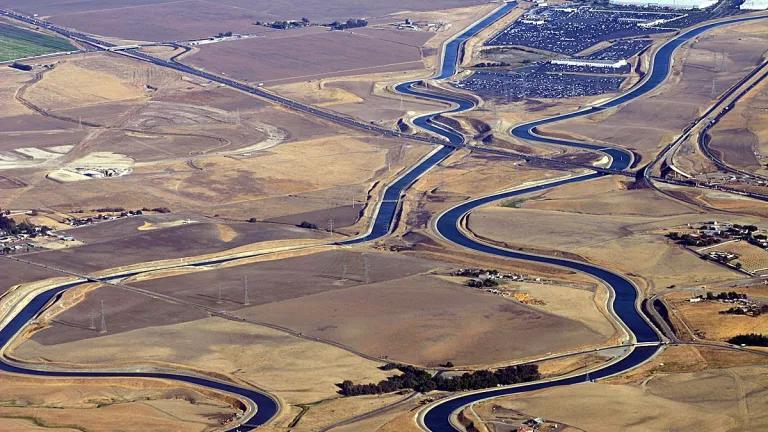Guide to Making a Public Commitment on Food Waste

Making a public commitment to reduce food waste is an important way to harness city leadership and constituent buy-in. It also increases accountability and can inspire other cities. This page details different types of commitments and guiding principles.
Mayor Michael Hancock of Denver adopted the Denver Food Vision in 2017, a holistic food systems vision that includes a plan to achieve a 57 percent reduction in the amount of residential food waste collected by the city by 2030. Part of the successful roll-out and implementation of this vision was committing to it publicly. Accordingly, when the report was released, city leaders announced their commitment to it—and to a food system that would help create and sustain a more inclusive, healthy, vibrant, and resilient city.
A public commitment can:
- build support for the work internally with city leadership and other departments, and externally with constituents;
- spark a connection with other cities that have similar commitments, helping to build a community that can support your work and create accountability;
- inspire other stakeholders and organizations in your municipality to join in the effort to reduce food waste.
At its most basic level, a public commitment is any sort of public statement made by city leadership that declares dedication to a cause. Strong public commitments should be accompanied by an articulation of specific goals, timelines, and actions. They should be grounded in data and have a quantifiable target. Often, when it comes to food waste, commitments are to reduce waste by a certain amount from a specified baseline; for instance, in 2015 federal agencies adopted a goal to reduce food waste in the United States by 50 percent, relative to 2014 levels, by 2030.
New York City took a broader approach and included food waste in its zero-waste goal. In his 2013 State of the City address, then mayor Michael Bloomberg identified tackling “New York City’s final recycling frontier: food waste” as a key step toward reaching the goal, outlined two years prior, to divert 75 percent of the city’s waste from landfill by 2030. To help reach this goal, Mayor Bloomberg created a Food Waste Challenge, which asked restaurants to commit to a 50 percent food waste diversion goal. Other cities, such as Nashville and Denver, have run similar challenges, and you can read more about running a restaurant challenge in your own city through our guide.
Another option is to commit to an established declaration or pact that outlines a specific set of actions, such as the Milan Urban Food Policy Pact (MUFPP) or the C40 Good Food Cities Declaration. These pacts include food waste reduction as part of a platform to work toward a better food system. We encourage cities to commit to their own goals as well as consider joining an established overarching pact, which can provide a holistic view of the food system and actions to improve it.
In 2015 Baltimore signed on to the MUFPP, becoming one of the first North American cities to do so. In 2016 it received the highest score for governance (one of the pact’s six pillars) related to food policy at the MUFPP convening in Rome. Baltimore has also taken a leadership role, and thanks to the city’s advocacy, several other U.S. cities are now signatories. Baltimore uses the pact as a framework to guide its work, and having city leadership’s commitment to the agreement has allowed staff to expand their work on food systems and food waste.
Public commitments can be communicated in different ways—from a report about a “food vision” to a public speech at an event to an executive order or city council resolution. While it takes more behind-the-scenes work to produce an executive order or a resolution, the official documentation can help bring more monetary or staff support for the initiatives. The Nashville Food Waste Initiative worked with Mayor David Briley to proclaim a “Stop Food Waste Day” to raise awareness and issue a call to action. To draft your own executive order, see our Template Executive Order (available for download on the right-hand side of this page).
Public commitments to specific goals, actions, and timelines set a benchmark and help move your work forward. They allow you to measure progress and increase the visibility of your work.
Guiding Principles to Making a Public Commitment
In order to determine the best commitment for your city:
Understand the position your city is in.
- What goals has your city already set that relate to food waste reduction? Examples might include zero-waste or diversion goals, climate goals, or broader sustainability goals. What plans have you already released? What pacts or organizations have you already joined?
- Can you start with a public commitment to your current, ongoing work, or do you need to create a new goal?
- Have you conducted a waste characterization study or other baseline food waste assessment to understand what goals are feasible to commit to?
Engage all relevant departments and local partners.
- What partnerships do you have in place that might be helpful in declaring a goal and/or pursuing progress on it?
- What relationships do you need to build in order to enable a commitment?
- What local organizations might be helpful in communicating commitment and achieving progress, and how will you engage them?
Determine what format the commitment will take.
- Will it be a speech, executive order, or something else?
Create a timeline and build toward the announcement.
- Determine when and from whom you need input, approval, and draft language.
- Get the word out to your residents about the city’s new commitment using ads, social media, and other tools.
We hope this guide and template will be useful to your work and will help secure public commitments. If you have additional thoughts or feedback, please reach out to us at foodmatters@nrdc.org.




